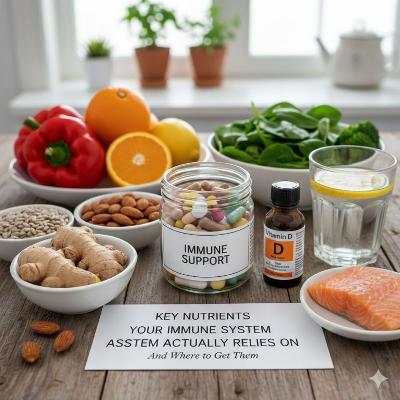Cannabidiol (CBD) is a chemical in cannabis widely studied for its numerous pharmacological benefits. The compound is most famous for its analgesic and anxiolytic properties, making it a potential remedy for pain and anxiety. Medical cannabis doctors also prescribe CBD-based supplements to treat seizures, nausea, inflammation, and sleep disorders like insomnia.
Besides its numerous health benefits, it’s also worth noting that cannabidiol is non-psychoactive. While CBD is a cannabis derivative, the chemical doesn’t induce euphoria. Therefore, users can administer CBD-infused products without worrying about getting intoxicated.
Also, like most cannabis extracts, CBD is available in various formulations. Common ones include oral tinctures, oils, vape juices, edibles, cosmetic products, and encapsulated CBD products.
In the recent past, reports have emerged to the effect that cannabidiol might help manage heat strokes. These claims are pretty credible, considering the long list of medical issues CBD might treat.
However, one should know certain things before using CBD to handle heatstroke. This article highlights what heat strokes are and the role of CBD in managing the condition.
What Is Heatstroke?
While researching cannabidiol’s therapeutic claims, you’ll stumble upon numerous publications citing heatstroke as one of the various medical conditions that CBD might treat. According to medical cannabis doctors, using CBD products from reputable suppliers like cbdfx may go a long way in improving the symptoms of heatstroke.
But before we delve deeper into the role of CBD for heatstroke, it would help to begin by understanding what this condition is.
As the name implies, heatstroke is a medical condition that causes your body to overheat. The condition results from prolonged exposure to high temperatures.
Heatstroke is common among athletes who practice outdoors when the weather is relatively hot, usually around 104 degrees Fahrenheit (40 degrees Celsius) or higher.
While it may not seem like a big deal, heatstroke is a severe form of heat injury that usually requires urgent medical intervention. If untreated, heatstroke can inflict severe damage to your vital organs, including the brain, heart, and kidneys.

Photo Credit: iStockPhoto.com
What Causes Heatstroke?
Heatstroke mainly results from prolonged exposure to hot and humid weather. This kind of heatstroke is known as classic or non-exertional heatstroke. It’s common in seniors and people with underlying chronic illnesses, such as lung disease and obesity.
Heatstroke may also result from engaging in physically strenuous activity in hot weather. In this case, the condition is known as exertional heat stroke.
While heat is the primary cause of heatstroke, certain factors may accelerate the condition. Common ones include wearing excess clothing, dehydration, and alcohol use.
Certain medications have also been linked to heatstroke. Examples include vasoconstrictors (drugs that narrow your blood vessels), beta-blockers (blood pressure drugs that inhibit adrenaline), antidepressants (anxiety medications), antipsychotics (medicines that manage psychotic symptoms), and diuretics (drugs that help your body eliminate excess water and sodium).
Symptoms of Heatstroke
The symptoms of heatstroke may vary from one person to another. However, they generally include the following;
- Elevated body temperature (104 degrees Fahrenheit or higher)
- Flushed skin
- Alterations in sweating
- Throbbing headache
- Racing heart rate
- Rapid breathing
- Nausea and vomiting
- Fatigue
- Irritability
- Drowsiness
- Seizures
- Slurred speech

Photo Credit: iStockPhoto.com
Treatment for Heatstroke and the Role of CBD
When it comes to heatstroke, prevention is undoubtedly better than cure. Standard preventive measures include wearing light and loose-fitting clothing, protecting yourself from sunburn outdoors, and staying hydrated.
But what if you’re already a victim?
Well, there’s no cause for alarm. A little dose of cannabidiol might help relieve various heatstroke symptoms.
CBD and Headache
Headache typically presents as pain and aching in the cranial muscles. Fortunately, pain is also the primary issue that cannabidiol is often marketed for.
CBD may treat pain by impacting various pain-signaling receptors in the endocannabinoid system, such as the vanilloid receptor. The compound may also combat headaches by improving the brain’s signaling of anandamide, a neurotransmitter involved in transmitting pain signals.
A 2017 review of studies found that https://cbdfx.com/collections/full-spectrum-cbd/ might treat migraines, considered the worst form of headache.
CBD and Irritability
Irritability and agitation are other common heatstroke symptoms that cannabidiol may relieve.
CBD is a powerful sedative. The compound can produce incredibly calming effects, thereby combating agitation and restlessness.
Studies show that CBD may inhibit cortisol, the primary stress hormone. This can be beneficial for people living with stress and anxiety disorders.
CBD and Narrowed Blood Vessels
CBD contains vasodilatory properties, which may come in handy for people on beta-blockers. Remember, these medications are notorious for constricting blood vessels, thereby aggravating heatstroke.
CBD exerts its vasodilatory properties by expanding narrowed blood vessels. That translates to enhanced blood flow, which may help relieve other heatstroke symptoms like elevated heart rate.
CBD and Nausea
Cannabidiol boasts powerful antiemetic effects. Therefore, it may help manage nausea and vomiting induced by heatstroke.
CBD’s antiemetic properties are the reason the compound is now a staple ingredient in certain cancer medications. That’s especially true for drugs used to manage chemotherapy-induced nausea.
CBD and Fatigue
Fatigue is another heatstroke symptom that you can manage using cannabidiol.
A 2014 study found that cannabidiol might boost energy levels. The study also revealed that CBD might improve mental focus.

Photo Credit: Pixabay.com
Wrap Up
CBD is not a cure for heatstroke. However, the compound may help treat or manage some of the condition’s most problematic symptoms.






